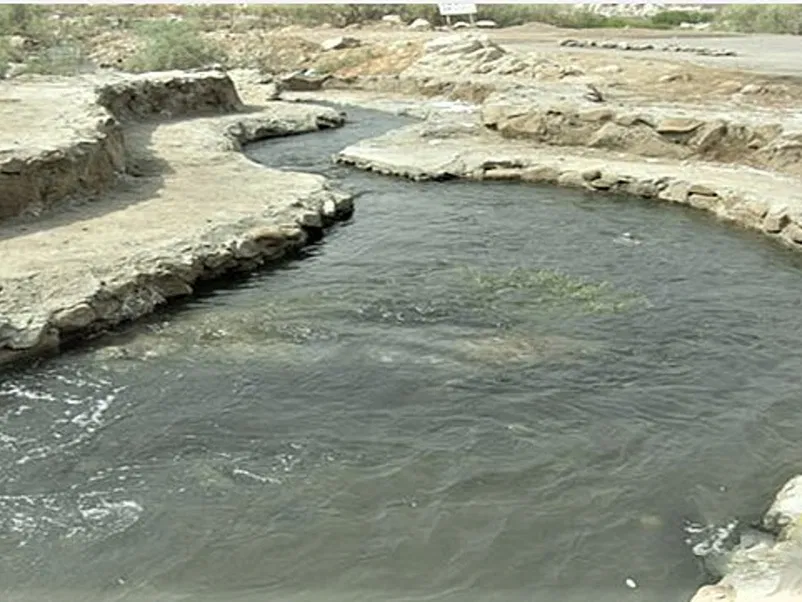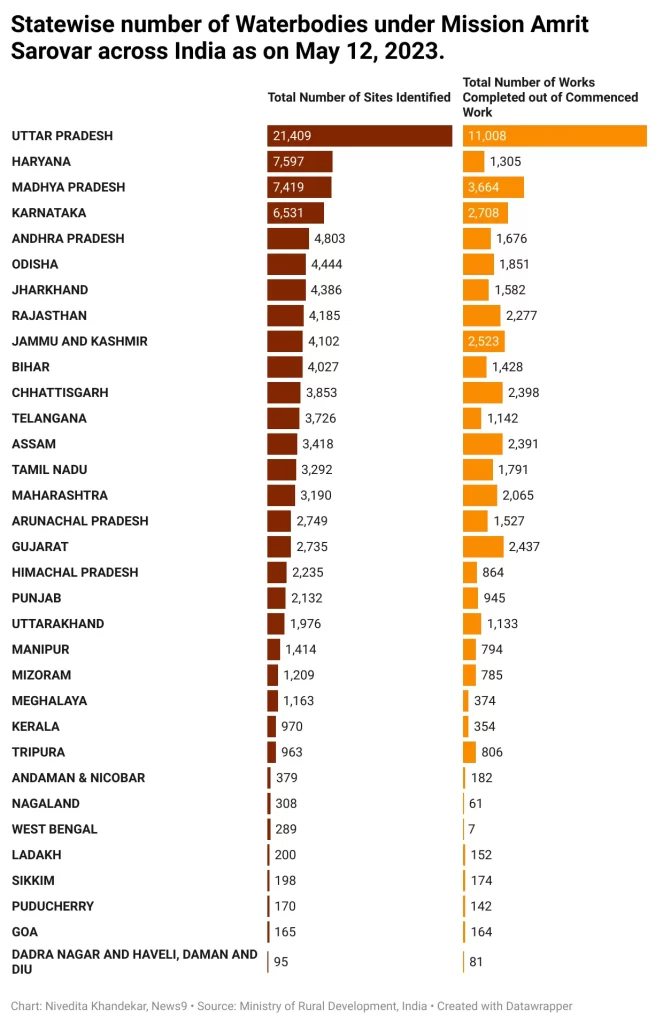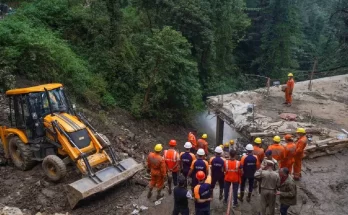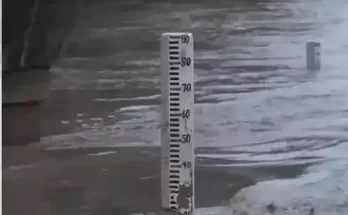Mission Amrit Sarovar will record groundwater levels across 6.5 lakh villages. The pre- and post-monsoon data will help conservation efforts.

The Dynamic Ground Water Resources of India, 2022, showed that the total annual ground water recharge was assessed as 437.60 bcm (Photo credit: Wikemedia commons)
Bringing in a paradigm change in groundwater monitoring, the Ministry of Jal Shakti is looking at digitalising its equipment. Starting 2023, it will bring out the groundwater assessment report every year. Another reason for cheer? India now boasts 50,000 new or revived water bodies under the Mission Amrit Sarovar. Also, an app named ‘Jaldoot’ will record groundwater levels across 6.5 villages twice a year.
These are significant developments because India is the largest user of groundwater in the world. According to a World Bank report, India consumes an estimated 230 cubic km of groundwater every year. This is more than one fourth of the global consumption and more than the United States and China put together.

That’s not all. According to the World Bank report, more than 60% of India’s irrigated agriculture and 85% of drinking water supplies are dependent on groundwater. Also, almost two-thirds – 63 per cent – of India’s districts are threatened by falling groundwater levels. With climate change leading to erratic rainfall, groundwater would be the only reliable source for domestic, agrarian, as well as industrial needs.
Digital water level recorder (DWLR)
The groundwater assessment report would now be released on an annual basis. Earlier, the Ministry brought out several of its assessment reports with irregular gaps. For instance, the ‘National Compilation of Dynamic Groundwater Resources in India’ released in 2022, and the previous edition in 2017.
“Starting this year, we are going to bring out the Assessment Report every year. We are also increasing the number of monitoring wells for better data gathering,” Pankaj Kumar, Secretary, Ministry of Jal Shakti, told News9 Plus.
Currently, the Central Ground Water Board (CGWB) has piezometer and open wells at nearly 26,000 locations for monitoring both quantity and quality of groundwater. Till now, the process was manual, with readings taken four times a year for level monitoring and once a year for quality.
“With our 26,000-plus monitoring wells, clubbed with those from different state governments, we were getting data from 67,000 locations for our assessment reports. We plan to expand our own network to 40,000 locations. So are several states, too. We are expecting this total number to increase to about one lakh,” said Subodh Yadav, Joint Secretary in the Jal Shakti Ministry.
Under the National Hydrology Project, all new additions are that of DWLR – the digital water level recorder – which not only records water level but also the water quality. Each such geo-tagged DWLR is linked to the telemetry system that enables real-time remote data collection and will also boost data collection from four times a year to four times a day. This will reportedly enable a better assessment and can be used for research and other scientific purposes.
Acknowledging the fact that the earlier cycle was erratic, Yadav said, “Now, we would be following the June to May cycle. So, by September this year, we shall be bringing out the assessment for June 2022 to May 2023.
Jaldoot app’s pre- and post-monsoon assessment
Meanwhile, another dataset is likely to be available from the end of 2023.
“The Ministry of Rural Development and the Ministry of Panchayati Raj, have jointly developed the Jaldoot app for measuring the water level in a Gram Panchayat through two-three selected open wells,” said an official from the Ministry of Rural Development.
The Ministry of Rural Development has been running the Mission Amrit Sarovar since April 2022. As part of Azadi Ka Amrit Mahotsav, it is aimed at developing and rejuvenating 75 water bodies in each district of the country.
At a recent workshop about rainwater harvesting organised by the Ministry of Jal Shakti, Amit Kataria, Mission Director, Amrit Sarovar, had said, “The Jaldoot app is recording pre-monsoon and post-monsoon readings from 6.5 lakh villages across India. We have already obtained data for post-monsoon in 2022. This year, we would be obtaining data for both pre-monsoon and post-monsoon.”
This massive data set will prove immensely useful for conservation initiatives. “This huge database will help a lot for assessing the impact of water conservation efforts and help us identify the specific locations where more efforts are needed,” he added.
He also said that the Mission would be happy to share this database with other line departments for helping in policy decisions.
As on May 12, the number of water bodies for which the work was completed was 50,794, out of 105,734 water identified across the country.
The Mission aims at a water body with a minimum pondage area of 1 acre (0.4 hectare), minimum water holding capacity of 10,000 cubic metre, and most importantly, a site for flag hoisting every August 15 and January 26.
“We have also emphasised on people’s participation at all stages of development, right through planning to completion,” Kataria said.
Precarious groundwater situation
More than 75% of India’s annual rainfall is received between June to September, which means a large temporal variation. Also, even when the average annual rainfall is about 120 cm, it ranges from 40 cm in western Rajasthan to 250 cm in Meghalaya, leading to large-scale spatial variation.
The Dynamic Ground Water Resources of India, 2022, showed that the total annual ground water recharge was assessed as 437.60 bcm (billion cubic metre). Keeping an allocation for natural discharge, the annual extractable ground water resource worked out as 398.08 bcm.
Out of the total 7,089 assessment units (Blocks/ Districts/ Mandals/ Talukas/ Firkas) in the country, 14% were ‘Over Exploited’; 4% were ‘Critical’; 12% were ‘Semi-Critical’ and 67% were ‘Safe’, depending on the percentage of groundwater extracted compared to groundwater recharged. Over and above this, 2% were categorised as ‘Saline’.
The latest government scheme, the Atal Bhujal Yojana, was launched in 2019 to arrest the precipitous decline. The World Bank joined in 2020 to support government of India in over 9,000 water-scarce gram panchayats in seven states – Haryana, Uttar Pradesh, Rajasthan, Gujarat, Maharashtra, Madhya Pradesh, and Karnataka – that account for about 25% of the area where groundwater is under stress.
(This story first appeared on news9live.com on May 12, 2023 and can be read here.)



